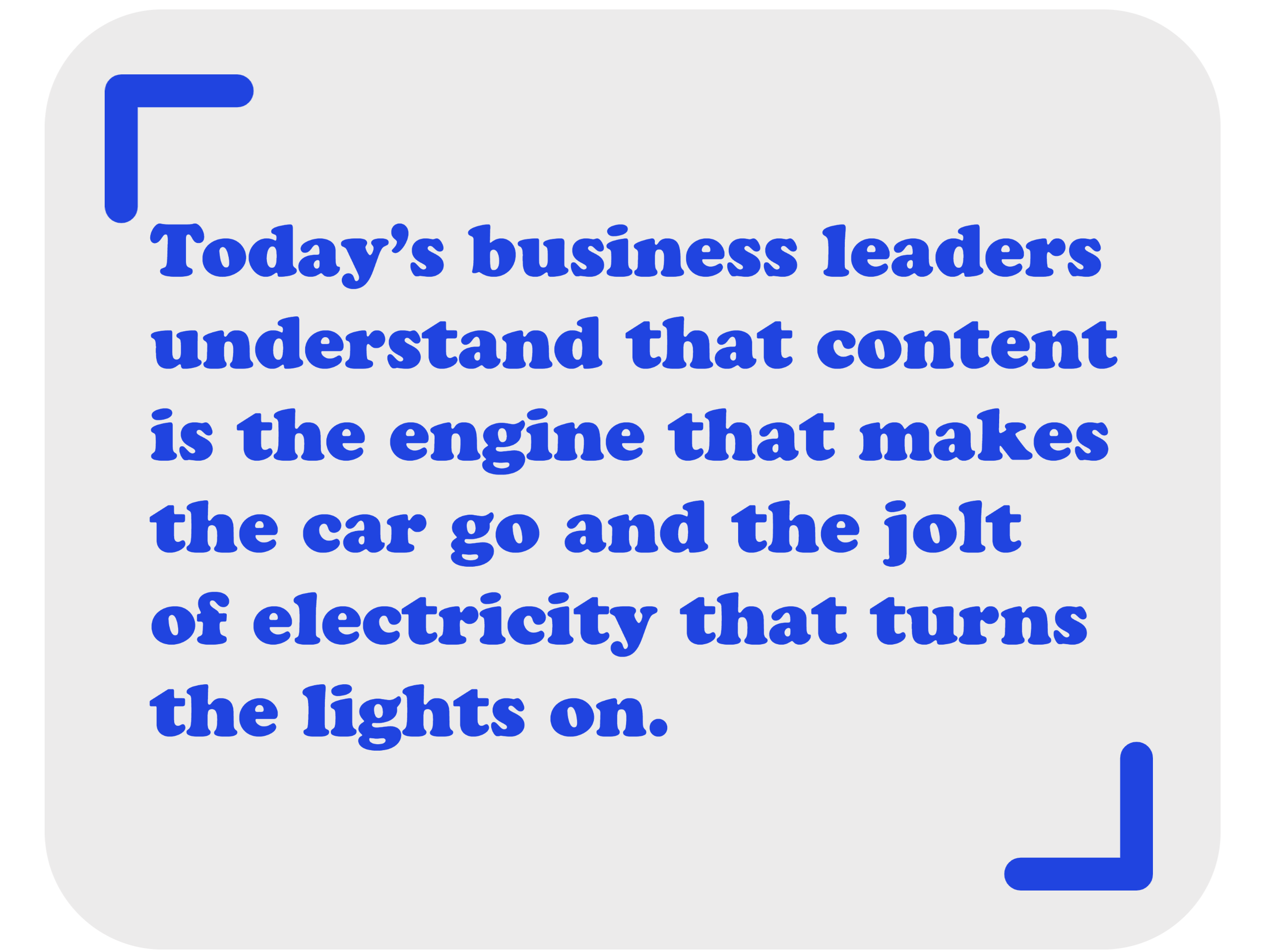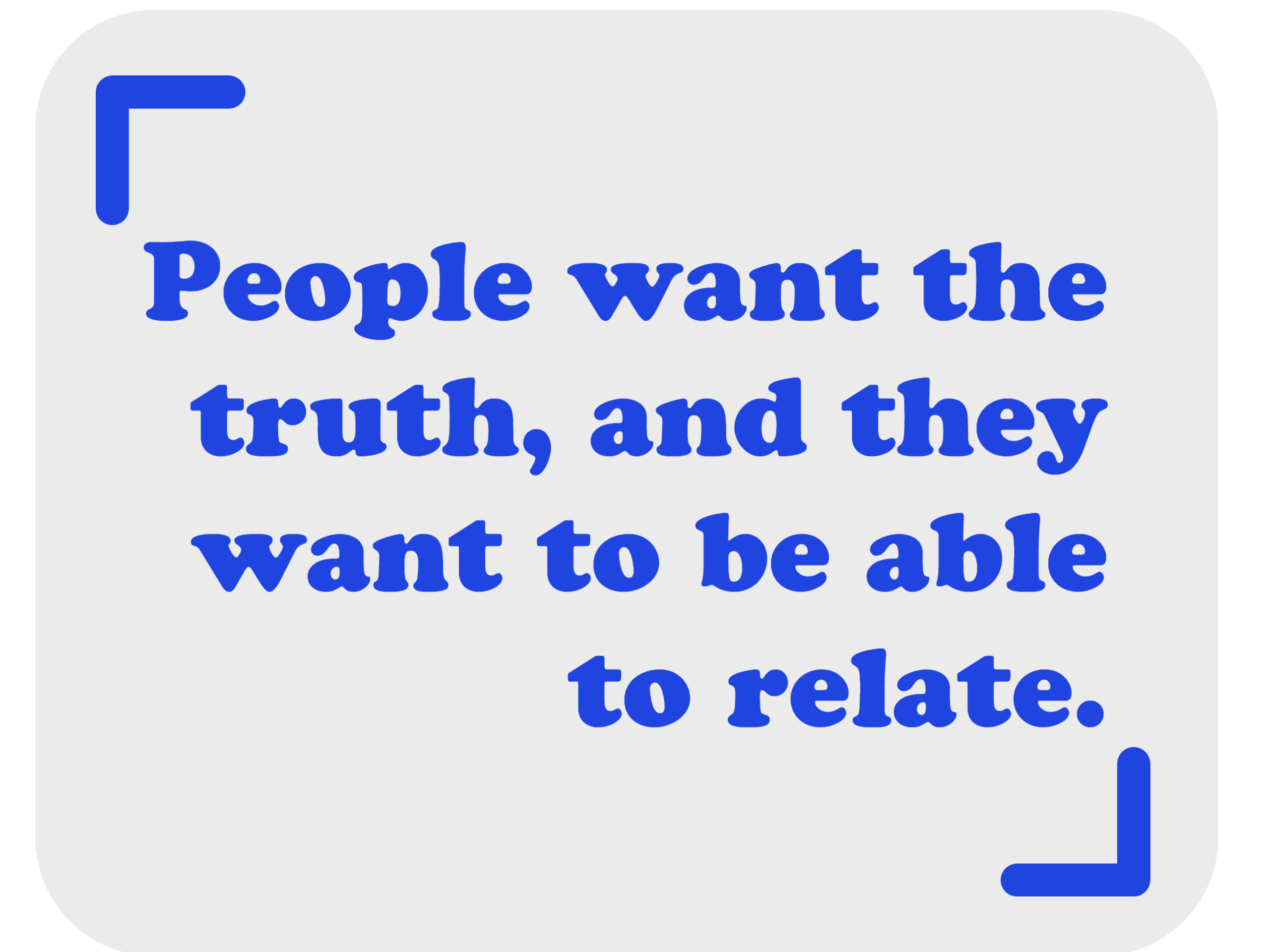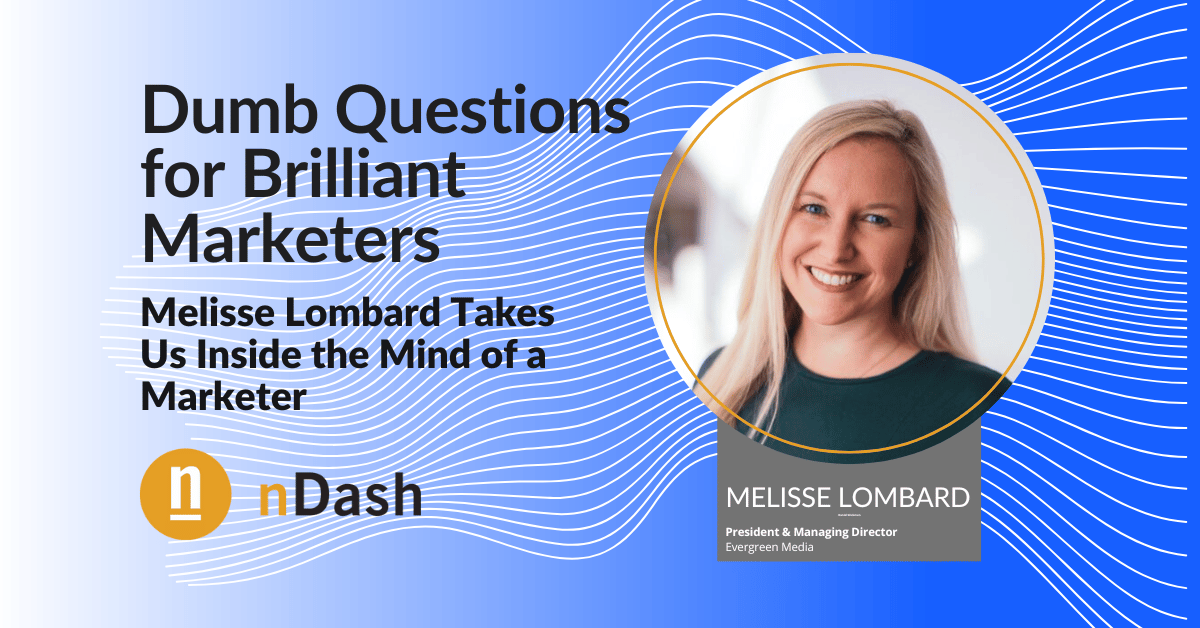Way back in 2017, nDash published a short series of interviews with some of the brightest minds in marketing. For 2022, we’re bringing it back! Welcome to a new series of Dumb Questions for Brilliant Marketers. We feel honored that Melisse Lombard agreed to be our first guinea pig for the re-launch. At the time of this writing, Meilsse was the senior marketing editor for Hopin. Today, she’s president and managing director for the newly launched Evergreen Media. You can read more about that transition in her LinkedIn post here: I just started my own content marketing business.
In this interview, we talk about her thoughts on the ever-changing content marketing industry and marketers, how the team at Hopin works together, and the importance of authenticity.
nDash: You’ve worked in the content space for nearly a decade now. How has your role changed over this period? And how (if at all) has the role of content marketing shifted during this time? What’s different between now and 10 years ago?
Melisse: Not to run through my resume but just to give some context, my first full-time job out of college was at Nickelodeon. I was part of their digital ad sales team, so I worked there with the director of sales strategy and brand integration. I took the job not thinking that it was in my dream field necessarily, but I thought working at Nickelodeon was a great opportunity. My job involved creating branded materials that we can now describe as “sales enablement content.” It was a lot of one-sheeters and materials to hype our digital properties that showed all the sales opportunities. On the other end, I was responsible for reporting on digital sales campaigns for the accounts that I was working on. I’m going to date myself, but that was 16 years ago.
I’d always wanted to be a journalist, so from there, I went to journalism school and got a master’s degree.
I worked as a reporter at a newswire for several years, where I wore many hats. I was producing, reporting, pitching, writing, editing, and shooting all my own video news feature stories there. 2008-2010 wasn’t an ideal time to be in news, so our newswire was making a lot of cutbacks, and I was a victim of that. First, I thought, “what am I going to do now?” Then, I took on what was probably my first content marketing role. However, the company didn’t describe it as such.
Ultimately, I ended up at a private school working in the communications department, again wearing many hats.
There, I started a video channel, produced a library of video content, and launched a blog with the head of school to forward our thought leadership. I managed social channels, wrote for the alumni mag, and produced a lot of content for digital channels. Additionally, I taught a video storytelling elective there to high school students, which was really fun but really challenging. I have a profound appreciation for teachers after that experience.
My first position where the word “content” was actually in my title was in 2013.
I moved into the travel space, first in tech at Cheapflights and KAYAK, and then into educational travel. Even though content marketing is still establishing itself as a formal discipline in many ways, content marketers have been around since the Jell-O recipe book days. Probably before that if we’re really digging back into history. Content is still about meshing art and science; it’s still about combining brand and business. It has long touched every part of the business, even if marketers don’t necessarily realize it. It’s also still about people. At the end of the day, content is largely about eliciting an emotional response, telling a story, and understanding that people are at the heart of everything that we’re doing, and they want genuine engagement to feel a connection.

In terms of changes, two main things come to mind.
One is having a true seat at the table. I’ve been lucky that the organizations I’ve worked for have understood the value of content and its potential for business impact. The content marketing function itself hasn’t always been well defined or understood, and the tools to measure success and impact haven’t always been that straightforward. Marketers are always cobbling together data and insights from many different platforms and trying to illustrate what that impact actually is.
Content wasn’t always deemed business-critical by default – even though content has always been critical to every business. With every new role, you had to re-prove your value really quickly. But that’s starting to change now. The discipline is getting better defined. We now have VPs of content and chief content officers in some organizations. In my experience, today’s business leaders really understand that content is the engine that makes the car go and the jolt of electricity that turns the lights on.
The second thing that comes to mind regarding how things have changed is that it’s gotten a lot harder for marketers to cut through the clutter.
People know when they’re being marketed to now, and frankly, there’s just a lot of content out there. It is an ocean, not a sea. And people aren’t wowed by what they were wowed by ten years ago, either. You have to find the gaps that you can fill and ways to be innovative in your space.
nDash: Content marketing responsibilities often fall on a small team. Can you give us some insights into the structure of the content team and why this approach works?
Melisse: I’ll talk a little bit about the team at Hopin, but first, I’ll say that I’ve been part of content teams that have ranged from just me to twenty people, so team sizes have varied. The team at Hopin is definitely still coming together. We’re currently structured to focus on a foundation of educational content intended to solve the major challenges for our audience and introduce them to our product offerings. We currently have a director of the team and three content marketing managers.
The other two content marketing managers are focused on owning specific content pieces and activations. I handle the majority of editing, editorial review, and editorial resources. Then we have a relatively small stable of contract writers. As I mentioned, the team is still coming together. We’re all ambitious go-getters, so we’re working hard and partnering with the wider marketing team and beyond to achieve a lot with a few people.
nDash: As a virtual events platform, how does Hopin view the relationship between content marketing and event marketing? How does one inform the other?
Melisse: I can’t speak to the company’s philosophy, but there’s an inherent connection between content marketing and event marketing in that we both leverage atomization of content. When I say “atomization,” I’m referring to the act of breaking down larger content pieces into small content pieces, crosscutting that content, building content in a modular fashion, and generally repurposing everything that you do to give it more life. When an event ends, there is a treasure trove of content on the table that marketers can almost endlessly repurposed. So, that’s a cornerstone of both content and event marketing.
nDash: Conventional wisdom used to say that a brand’s product should rarely (if ever) be the focus of blog content. However, it looks like Hopin has taken somewhat of a contrarian view to this, with great results. What led you to go this route? And what advice would you have for marketers who think the product and blog should rarely overlap?
Melisse: We’re in the events industry, so people constantly create experiences for other people. And content is at its best when it delivers an experience, so the two naturally go hand in hand. I mentioned before that our content is intended to solve our audiences’ challenges. We aim to connect the dots for members of our audience who might not see all of the possible solutions that are in front of them. Part of that is shining a light on our product solutions.
There are ways for marketers to make the connection back to products without doing a hard sell. In one of my past roles, we built a whole library of clever, succinct ways we could talk about our brand and products in our editorial content. We’d give one another shout-outs when someone came up with a particularly new, cool way to do that without being directly “sales-y,” but that still helped educate people on who we are and what we do. I see it more as offering valuable and helpful options, not being pushy.
nDash: Many content marketers no longer base the definition of “success” on page views, clicks, or even leads. We’re seeing some content teams with KPIs closely tied to revenue and other sales metrics. Is this the case for you and your team? And how have you seen the success criteria change in recent years in terms of content?
Melisse: Content marketers are actually part of the revenue marketing team at Hopin, so we’re directly tied into revenue goals and KPIs. Across the past decade of my career, it’s been interesting because while most people understand that vanity metrics are just that, they’re still interested in those metrics. My experience has been that you have to strike a balance between lighter metrics and business outcomes because different stakeholders still care about both at the end of the day.
I’ve been in roles in the past where I’ve constantly been beating the drum that it almost doesn’t matter how many people follow you anymore on social. But people still want to know, and you have to establish yourself in the spaces you’re choosing to play in based on your audience. Over the years, content has largely been looked at as an acquisition channel and tied in tightly with SEO and social, so it’s often been about lowering the cost of acquisition. That’s an oversimplification, obviously, of all of the possible business objectives that you could have for your content. However, at the end of the day, I still hear about that as a key target for most marketing teams.
nDash: January is often a time for bold predictions in the content space. Are there any you’d care to make? Or dismiss? What trends are you eyeing in 2022?

Melisse: I’m a very future-focused person, but admittedly, the last two years have made me hesitant to try to predict anything. That said, I’m not sure if this is a “trend” per se, but it’s connected to the pandemic: a drive toward authenticity, honesty, true stories, and the unpolished, raw version of things. We just published our 2022 event trends report for Hopin, in which Liz Lathan of Haute Companies talked about the appetite for authenticity, and I have to agree with that.
She notes that we’ve been living in this world of sweatpants and dirty kitchens and kids and pets making cameos. This has been a time of peeling off that shiny surface and taking a hard look at reality. People want the truth, and they want to be able to relate. At the end of the day, we’re all human, and there’s simply no perfection in the human condition. We’ve seen that a lot over the last decade with the push to video and audio, wanting to see and hear people, understand what the real source of information is, and drive credibility around that as a follow-on from there. I’m not big into trends, but I do think that one’s going to stick after this experience.
nDash: What brands do you draw inspiration or ideas from for how Hopin approaches content? What are some B2B brands that you admire for other reasons?
Melisse: I largely come from the B2C world, so I won’t pretend to be as in-depth as some of my colleagues would be about the B2B space. I’ve been intrigued by the mindfulness business lately and how they’re doing content. I’m into the Ten Percent Happier podcast, which is Dan Harris’ company. He always says the podcast is the lecture, and the actual meditations in the app are the labs.
This is such an interesting setup from a content standpoint. All these businesses – Ten Percent Happier, Headspace – know how to make content feel like a comforting, relatable experience, even when you’re distracted and stressed. Marketers can all identify with the fatigue of being on video, reading things online, and being completely immersed in the digital space day in and day out. This content still draws you in amidst all that; you want to keep listening, reading, and watching. They’ve structured the content to be an experience intended to calm you versus ramping you up.
Another space that I happen to look at frequently these days is the parenting space. They do a great job of personalizing the content and making it feel like it’s intended for you. I get regular updates from parenting sites that talk to me about my child’s development that month, what they should be doing, and what I might expect to see from them. We can take some cues from that as content marketing professionals in terms of customizing the experience – making it feel like you’re being spoken to while being taught and informed at the same time.
nDash: What else is Melisse up to when she’s not crafting the brand story for Hopin?
Melisse: My husband Pearse and I have a two-year-old son, so he keeps us pretty busy. I sing with a professional acapella group here in the Boston area. Unfortunately, the pandemic has not been kind to performers and the live performance space; we’ve still managed to go through stints of rehearsing in person, but those have been somewhat few and far between. We’re virtual again and trying to keep our voices in shape by creating video content remotely.
As a content marketer, I’ve done a lot of writing in my career. But I also love writing on the side. Creative writing, mostly poetry.
Finally, I’m from New Hampshire originally and have long been a northern New England gal at heart. I get energy from being outside. I’m a skier and swimmer and an outdoorsy person whenever possible. Whether it’s going on walks or whatnot – these days, it’s usually something simple.
nDash: Well, thank you so much for taking the time to talk to us today!
Melisse: Thanks for having me!
Editor’s notes:
Many thanks to nDash freelancer Janna Leadbetter for serving as the transcriptionist for this interview. This interview was updated on 11/10/2022 to reflect Melisse’s transition into business ownership.
